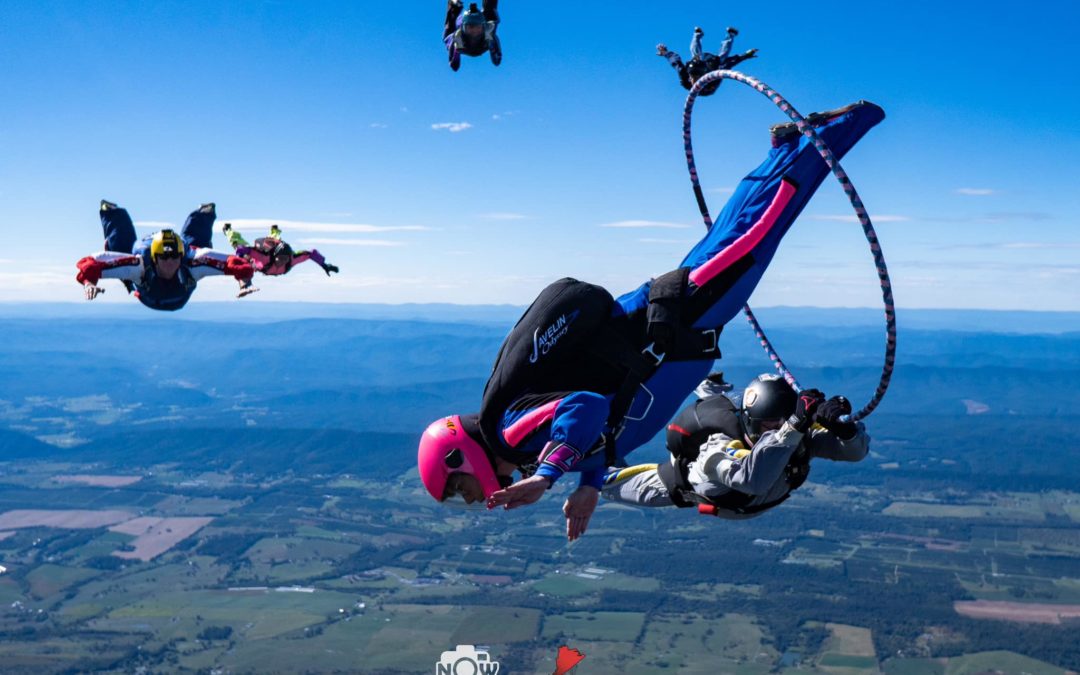Skydiving isn’t on everyone’s bucket list and for some, they only know what they may have seen scrolling on social media. It seems pretty straight forward – skydiving is jumping from a plane with a parachute and landing back at earth, right? Well, in short, yes… but there’s so much more to skydiving than meets the eye! So what’s there to know?
Skydiving Is A Sport
According to the ole Dictonary.com, the definition of “sport” is:
An athletic activity requiring skill or physical prowess and often of a competitive nature, as racing, baseball, tennis, golf, bowling, wrestling, boxing, hunting, fishing, etc.
Skydiving has had competitions since the early advent of the sport dating back to 1951. The national organization, the United States Parachute Association (USPA) reports that the first World Parachuting Championships was held in Yugoslavia and had 5 Euro teams compete. The US sent its first teams to the event in 1956 in Moscow, and has been sending teams ever since.
The USPA has been holding US Nationals since 1962 conducting the largest skydiving event annually. But not only does USPA hold competitions, there are other leagues and remote competitions that happen throughout the years as well around the globe.
There are Different Skydiving Disciplines
It’s a common belief that there’s only one kind of skydiving and that is either tandem skydiving or falling belly to earth. In the early days, it was more parachuting than freefalling. Back in the day, skydivers used to do accuracy competitions to land their parachutes close to a target (that still happens today, but not as popular as it once was). But with the advent of technology, skydivers started to perfect freefalling. There are so many so we’ll list them and a brief description:
Freeflying – falling head or feet to earth in a vertical orientation
Angle flying – moving across the sky in an angled position either on one’s back or belly
Speed – going as fast as you can straight down to the earth
Canopy Relative Work – flying parachutes together in groups with intent of linking up
Canopy Piloting – flying parachutes at a high speed towards the ground and planing out before impact to create a swoop like motion
Flocking – flying parachutes together but not linked
There are also different categories of disciplines as well and you can earn different types of instructor ratings to teach.
We All Aren’t Adrenaline Junkies
This is a stereotype some skydivers love, but many loathe. Yes, we love this sport with it’s intensity, fast-paced thrill. However, we’re really all kinds of people that have found this sport and made it our hobbies and for some, careers. Skydivers are an eclectic group from all kinds of backgrounds, careers, and ages (over 18+ that is).

The Legends Are Living
Considering the ages and past times of other sports, skydiving is a young sport. Many of today’s pioneers in technology, training, and advancement of the sport are still among us. How cool is that! There is a Skydiving Hall of Fame that began in 2010 to recognize the leaders in the industry with a proper tip of the hat and celebration annually.
In fact, one Hall of Famer, Kim Knor, is 84 years old doing tandem jumps, after a long hiatus to raise her family. She’s now going around the country making tandem jumps to earn her Gold Wings (a 1000-jump award issued by the USPA).
There’s so much to the sport that it’s hard to cover in just one article. Not only is skydiving something one should just experience the act of, but to check out what the community and sport is all about… because it’s beyond words to describe!

